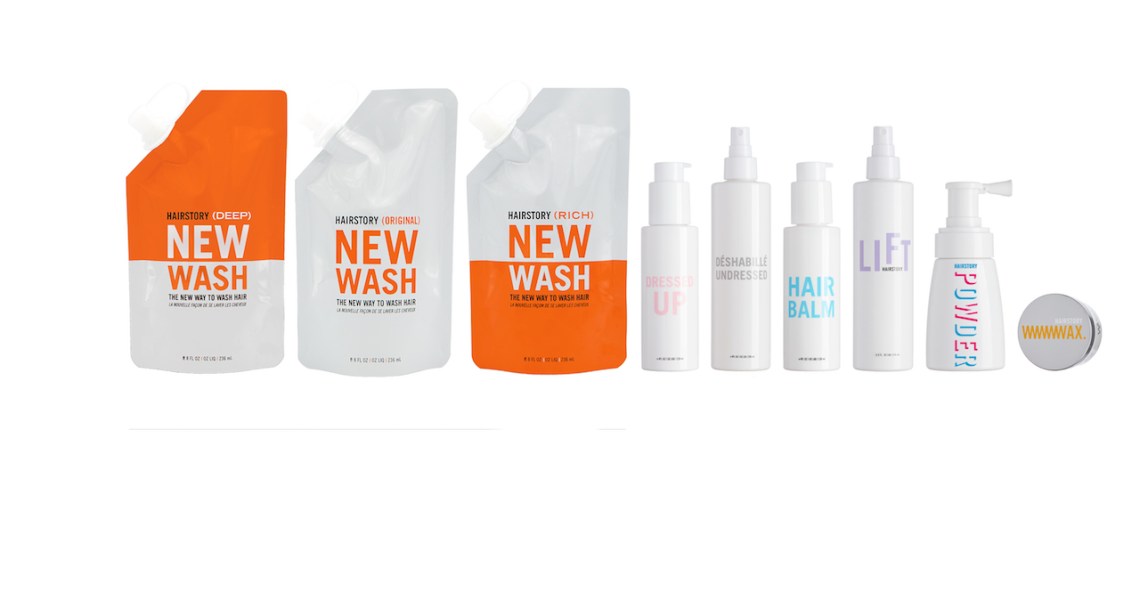As DTC hair-care sales have surged during the pandemic, “anti-shampoo” brand Hairstory has seen the benefits.
Now 5 years old, the brand experienced 85% revenue growth in 2020, up from $9.5 million in 2019. According to founder Eli Halliwell, Hairstory’s model of DTC sales and e-commerce-focused sales to hairdressers, combined with an avoidance of wholesale, has helped the brand achieve growth. It’s also benefiting off the overall strength in hair-care sales during the pandemic. According to The NPD Group, 2020 holiday sales of prestige hair care were up 51% year-over-year, as salons across the U.S. either remained closed or experienced severely curtailed business hours.
“2020 was a fantastic year for us, because we were now firing both on the direct-to-consumer side and on the hairdresser side,” said founder Eli Halliwell, who served as Bumble & Bumble’s gm and later the CEO of Jurlique before founding the brand. “You had lots of people who were at home on social media and a lot of advertisers that went away from digital advertising, so the market became better for us.”
Unlike some categories like makeup, hair care has remained resilient during the pandemic. Following 11% growth in hair-care sales in the third quarter of 2020, hair care is a significant growth category being eyed by investors.
Hairstory’s sales model consists of it DTC website, Amazon and hairdressers. It currently sees 70% of its business from online DTC sales and 30% through hairdressers, which includes Amazon purchases by their clients. The DTC channel has recently proven especially successful, with 93% growth in 2020, while sales through hairdressers rose 62%. The brand’s reliance on DTC was not in its initial plans.
Halliwell said, when he launched the brand five years ago, he “thought the hairdresser side of the business was going to be the main engine and would be what was going to take off first, and that the direct-to-consumer element would be icing on top. It turned out to be the opposite,” he said.
He noted that the brand takes a digital-first approach to hairdresser sales, which has allowed that business to grow even as salons have shut down. He said this is a contrast from brands he’s worked with in the past; Bumble & Bumble “was all built on the back of salons and hairdressers.” Hairstory operates off a subscription model, offering commission to hairdressers for clients’ repeat purchases on DTC, while also offering commissions for Amazon purchases.
“We figured out a way to give the hairdresser credit every time their client buys through Amazon,” said Halliwell. “Once we know who the client is, if we sell to them through Amazon, then we can see that it’s a person who we already know.”
“Once we can get someone to purchase the third time, then they stick with us,” he said.
One way the brand is sticking to a traditional salon model, however, is it’s steering clear of retail sales. “We’ve turned down everyone — we’ve turned down Sephora, we’ve turned down Ulta, we’ve turned down Neiman’s,” said Halliwell. The brand is continuing with this model, and Halliwell expects the hairdresser segment to pick up as a source of growth in 2021.
“We finished the year at just under 1,800 hairdressers” enrolled in the brand’s hairdresser sales program. “I think we can double that next year. We’re going to accelerate on the hairdresser side of the business,” he said.
The brand’s commission-based hairdresser program has paid around $1 million to hairdressers, according to the brand. Halliwell expects hairdresser growth to become more important going forward, especially post-pandemic. “If we can double the base of hairdressers, then that will set us up for the following year, to have a similar kind of growth.”




